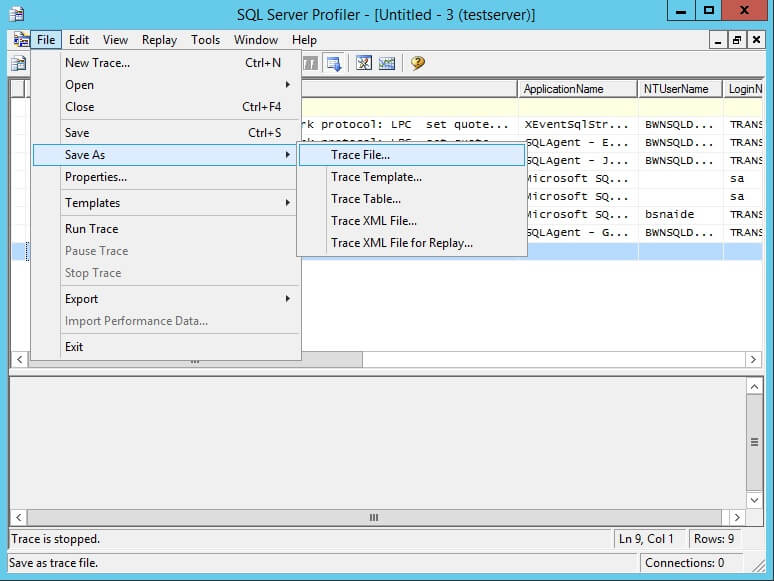

Probe tnf_name: "found_a_factor" tnf_string: "keys cookie find_factor file cookie.c line Probe tnf_name: "factor_start" tnf_string: "keys factor file cookie.c line 61 "

The output of the tnfdump file is very wide-open a very wide window to display it: probe tnf_name: "start" tnf_string: "keys cookie main file cookie.c line 17 sunw%debug The following table shows output from the prex cookie command described in "A Sample prex Session". Reading this output requires an understanding of TNF that is beyond the scope of this chapter. The -r option to tnfdump provides detailed (raw) TNF output. Because tnfdump output goes to stdout by default, you probably want to redirect it into a file. To convert the binary trace file to an ASCII file, use the tnfdump command and the name of the binary trace file. If you disconnect from the target and attach later with a different trace file name, the newer name is ignored.Ĭonverting the Binary File to Readable Format This can be changed with the -s option for prex.Īfter a program is tracing to a file, there is no way to clear the trace file or to give it a different name for the lifetime of that program.
/do0bihdskp9dy.cloudfront.net/09-13-2022/t_5ad560cd170a4e009738ab72bb7d9cba_name_file_1280x720_2000_v3_1_.jpg)
The default size of a trace file is four megabytes. When the trace file has been filled, newer events overwrite the older events.
READ TRACE FILE 4PEAKS FULL
You can override these default locations with the -o option to the prex command (see "Command Line Options for prex " for a full explanation).
If $TMPDIR is not set, the file is created in /tmp/trace- pid. For the translated sequences, users can select the reference organism and can customize other features such as whether amino acids are displayed using their one- or three-letter codes.The binary trace file you create with prex contains information determined by the prex commands you chose (see "Running prex").īy default, this file is created in / $TMPDIR /trace- pid, where pid is the process ID of the target program. The entire DNA sequence (not just that portion displayed on the screen) can be displayed in a sidebar, and users can toggle between the DNA sequence and the translated sequence. Users can introduce frame shifts of 1–3 nucleotides and the corresponding protein sequence is updated. The translated amino acid sequence is displayed beneath the DNA nucleotides, with codons clearly demarcated. Users simply open their trace files in the program to access functions such as a visual depiction of sequence quality, the ability to change the spacing between peaks on the display, and plugins to analyze hydrophobicity and the summary statistics for nucleotide and amino acid prevalence.
READ TRACE FILE 4PEAKS SOFTWARE
The software is free to download and is easy to use. Strong Points: Free software, easy to useĤ Peaks is a handy program for OS X that lets researchers easily analyze their DNA sequencing trace files.


 0 kommentar(er)
0 kommentar(er)
